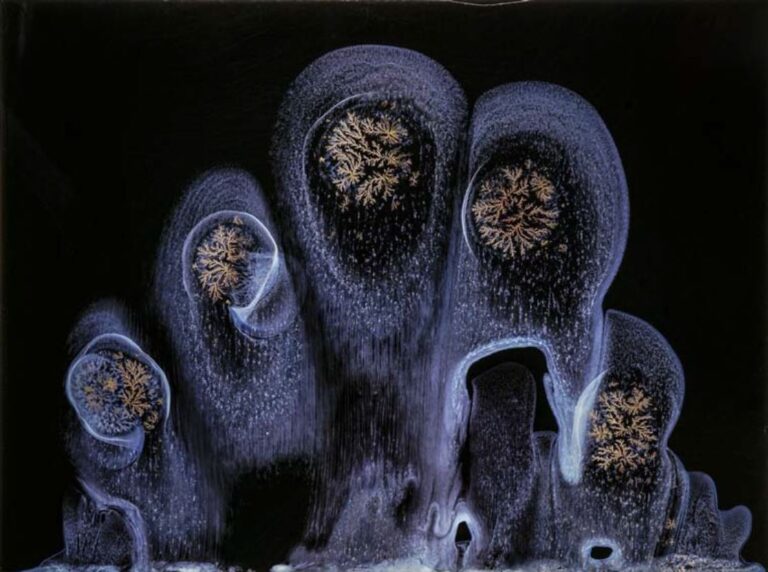As we near the opening of EXPO 2018, we reached out to learn about the artwork our partners at Catherine Edelman Gallery have in store and the artists they plan to feature. Our valued collaborations with Catherine Edelman Gallery over several years have made it possible to share this sneak peek. We’ve had the pleasure of providing fine art framing to the gallery leading up to this year’s EXPO and we’re excited to share some insight into their artistic talent.
“It is a fantastic experience working with Catherine Edelman Gallery, collaborating with their team to discuss the best way to present each unique artists’ work whether it’s mounted onto specialty Black DiBond or delicately hinged with miniature Japanese pin clips.” Seaberg staff Laura and Blair relay their experience with the gallery, “Being able to work closely with the gallery through the year and see the variety and depth of work they exhibit have always been a great privilege. We’re looking forward to this year’s show and can’t wait to view all of the fantastic artists that are being represented!”
“Seaberg has been an invaluable business partner, custom framing the majority of the photographs shown at Expo Chicago. Their precision and craftsmanship are terrific, and make for a wonderful collaboration.” Catherine Edelman acknowledges the level of skill that our experts have lent to their featured EXPO pieces. Every year Catherine Edelman Gallery prepares for Expo Chicago during the summer months. They always feature a melange of known artists alongside new, recently discovered talent. This year, Expo Chicago 2018 is no exception. The gallery’s recent press release expresses their excitement to present these exceptional artists.
Jess T. Dugan
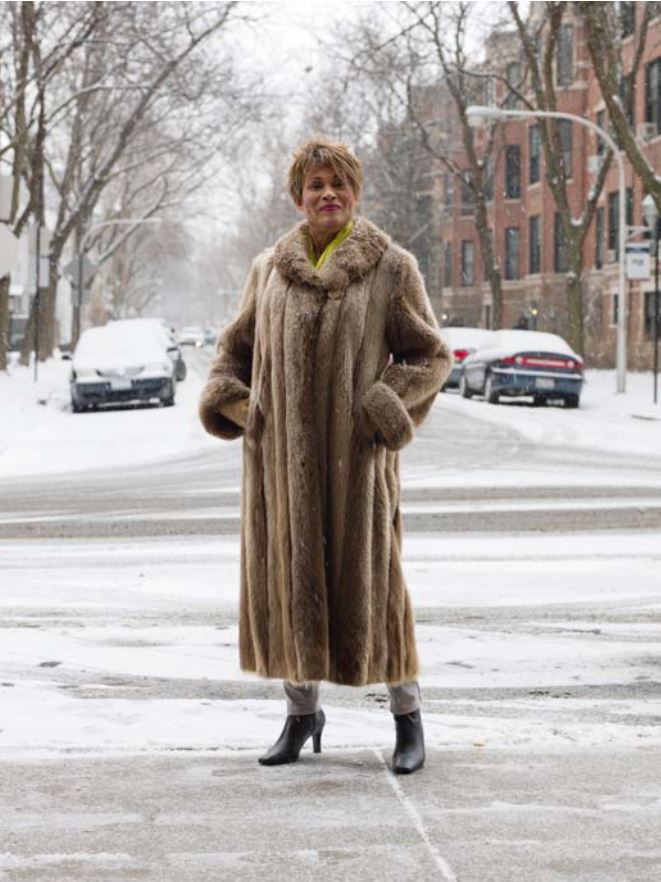
Gloria, 70, Chicago, IL, 2016 ©Jess T. Dugan / image courtesy Catherine Edelman Gallery, Chicago. Framed by Seaberg.
For over five years, photographer Jess T. Dugan and social worker Vanessa Fabbre traveled throughout the United States creating To Survive on This Shore: Photographs and Interviews with Transgender and Gender Nonconforming Older Adults. Seeking subjects whose lived experiences exist within the complex intersections of gender identity, age, race, ethnicity, sexuality, socioeconomic class, and geographic location, they traveled from coast to coast, to big cities and small towns, documenting the life stories of this important but largely underrepresented group of older adults. The resulting portraits and narratives offer a nuanced view into the struggles and joys of growing older as a transgender person and offer a poignant reflection on what it means to live authentically despite seemingly insurmountable odds.
Elizabeth Ernst
For more than 12 years, Elizabeth Ernst has created art about the people and entertainers affiliated with the G.E. Circus, a small family-owned circus of aging performers. In her newest series, Shady Grove Nursing Home, Ernst continues to create characters that tackle the many issues of difference, along with the effects of aging on the mind and body, which can be seen in the arthritic fingers and glazed eyes of the piano player. Whether real or imagined, Elizabeth Ernst creates a world that relies on disbelief and suspended reality, peppered with absolute truths.
Terry Evans
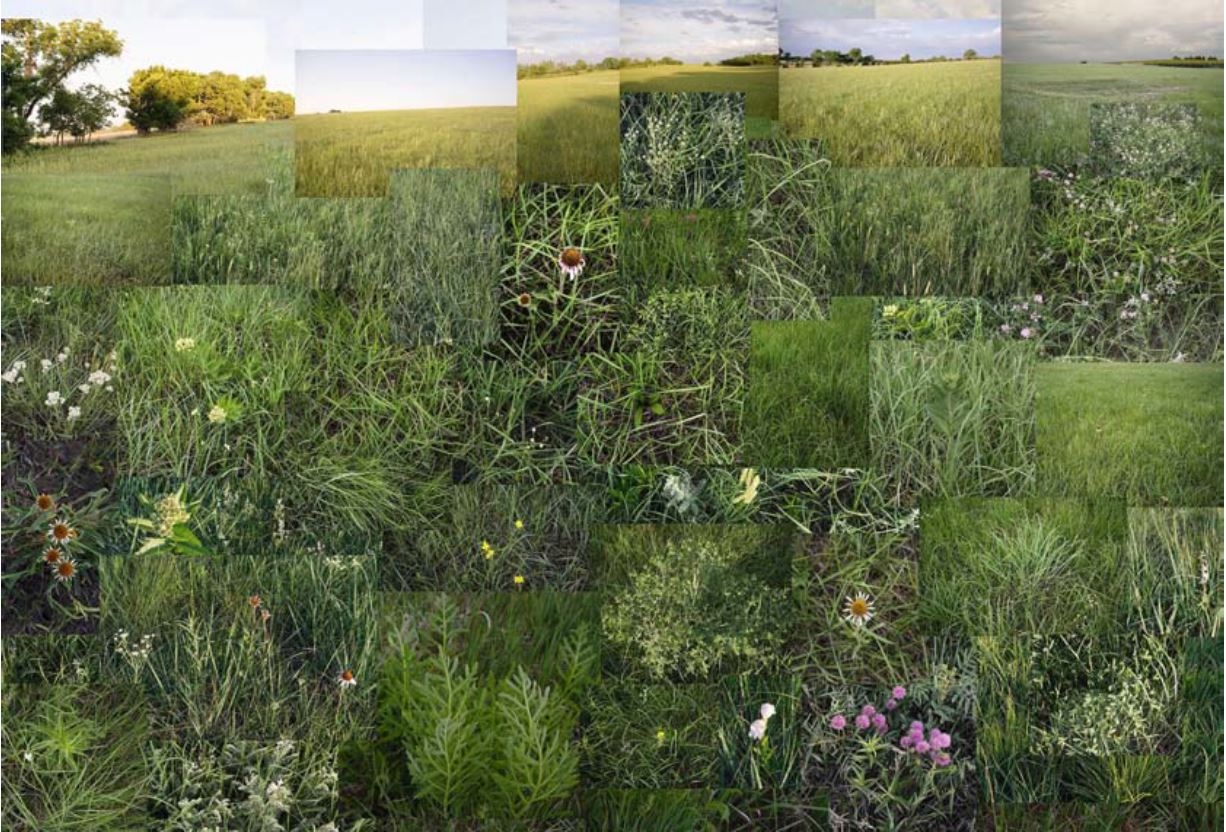
Fent Prairie near Salina, Kansas, Late May 2018 ©Terry Evans / image courtesy Catherine Edelman Gallery, Chicago. Framed by Seaberg.
Since 1978, all of Terry Evans’ work has been connected by an abiding interest in and love for prairie. This interest began more than forty years ago when she photographed the Fent prairie, an 80-acre virgin prairie near Salina, Kansas, where she lived. Evans explored Fent and other prairies for the next eight years, which introduced her to the wondrous balance of an undisturbed ecosystem and has informed all of her work to date.
Garrett O. Hansen
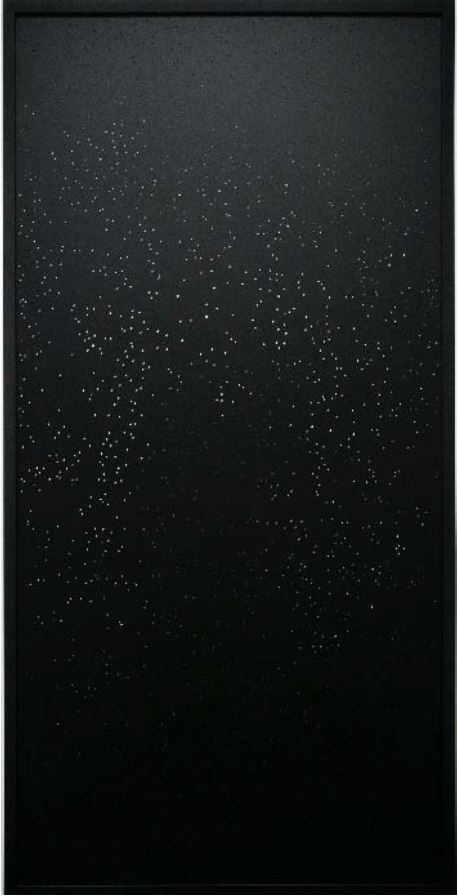
Loss, 2018 ©Garret O. Hansen / image courtesy Catherine Edelman Gallery, Chicago.
In the United States, roughly 40% of households own a firearm. This statistic is at the core of work being done by Garrett O. Hansen. In 2013, Hansen moved to teach at the University of Kentucky and it was in Lexington that the prevalence of gun culture caught his attention and became the focus of his work. Guns are the most common method of suicide in America, with just over 50% of all suicides involving a gun. His newest body of work, entitled Loss, considers these statistics and addresses the fact that over 22,000 people a year are ending their lives with a gun.
This large-scale piece acknowledges the devastating toll guns are taking on our communities. Very little media attention is given to average Americans who take their own lives, preventing thoughtful and informed conversations about suicide and the strong correlation between gun ownership and suicide by gun. This new series directly addresses this issue and asks viewers to acknowledge the magnitude of the problem.
The patterning on each panel is based on dove shot spray patterns fired from a 12-gauge shotgun. These patterns are then photographed and reproduced using a laser cutter. Each hole represents a single suicide in which a gun was used.
Pete Jacobs

She Laughed, 2017 ©Pete Jacobs/image courtesy Catherine Edelman Gallery, Chicago.
Pete Jacobs is a photographic conceptual artist and a painter, he often portrays vulnerable humanism. His multi-panel Tableaux series transforms the worldly—a tightrope walker, a laughing woman, a collection of prosthetic eyes, a text statement on unrequited love—into the strange and illuminating melding of expressionistic color fields with ghostly underlying imagery.
Michael Koerner
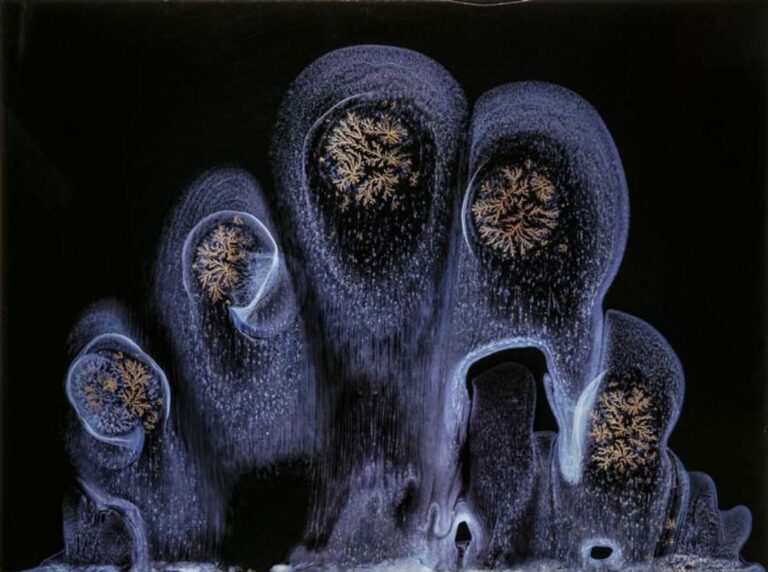
Finger Prints #6179, 2018 ©Michael Koener / image courtesy Catherine Edelman Gallery, Chicago. Framed by Seaberg.
Michael Koerner is the oldest of five brothers. Due to genetic abnormalities and cancer, he is the only remaining living son. His brothers’ fates (and potentially his own one day) can be linked to their mother, who was eleven years old on August 9, 1945, when the atomic bomb was dropped on Nagasaki. She lived in Sasebo, Japan, 45 miles away from the blast. The long-term effects of severe, acute exposure to gamma radiation led to his mother’s death at an early age and all of his brothers. Koerner’s work explores his family history and genetics through small tintypes, using photographic chemistry to assimilate the bursts and biochemical fallout from the atom bomb.
Gregory Scott
Gregory Scott blurs the lines between photography, painting, and video by combining all three into one single narrative piece. As more and more artists blur the lines between media, Scott has taken the idea to a whole new level, presenting video-based wall pieces that are humorous and poignant, contemplative yet accessible.
Laurent Millet

Cyanomètre, 2017 ©Laurent Millet / image courtesy Catherine Edelman Gallery, Chicago. Framed by Seaberg.
For more than twenty years, Laurent Millet has channeled his innate curiosity to create photographs that question the way objects appear within space and time. Millet’s newest series, Cyanomètre, combines photographic chemistry with an instrument invented in the 18th century by Saussure to measure the blue of the sky. The blue ink used by Saussure is replaced by cyanotype blue. Another image is also present on the same sheet of paper, a black and white digital print showing the elaborate drawing of ellipses. These are reminiscent of the stars and represent the curve of their movements.

